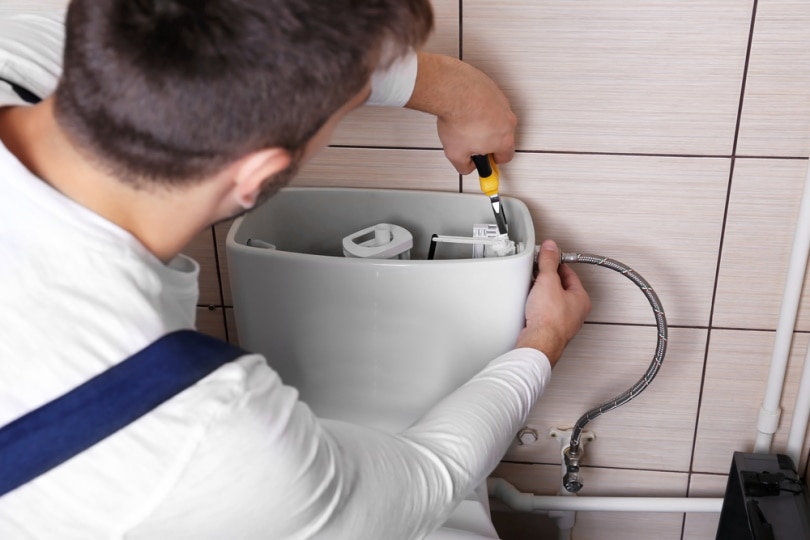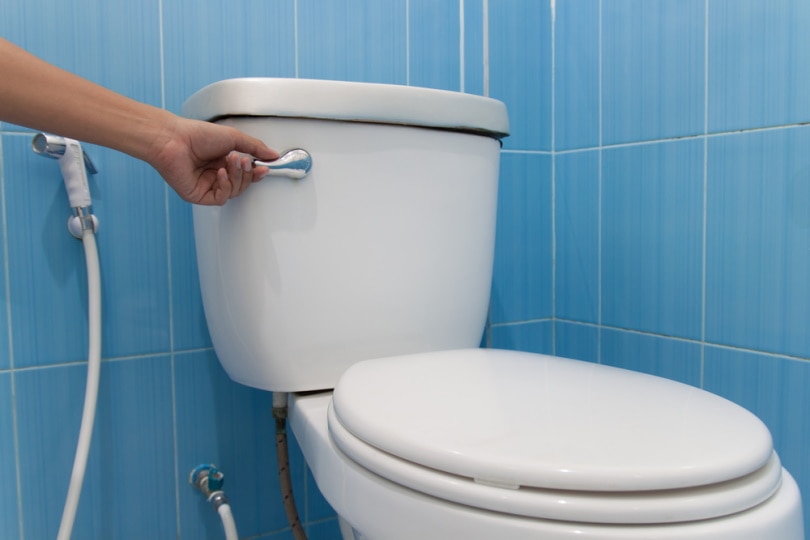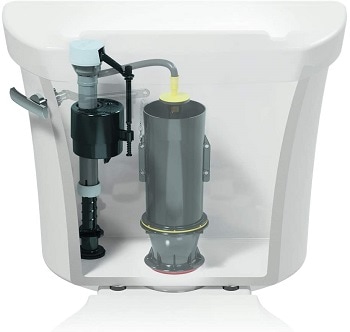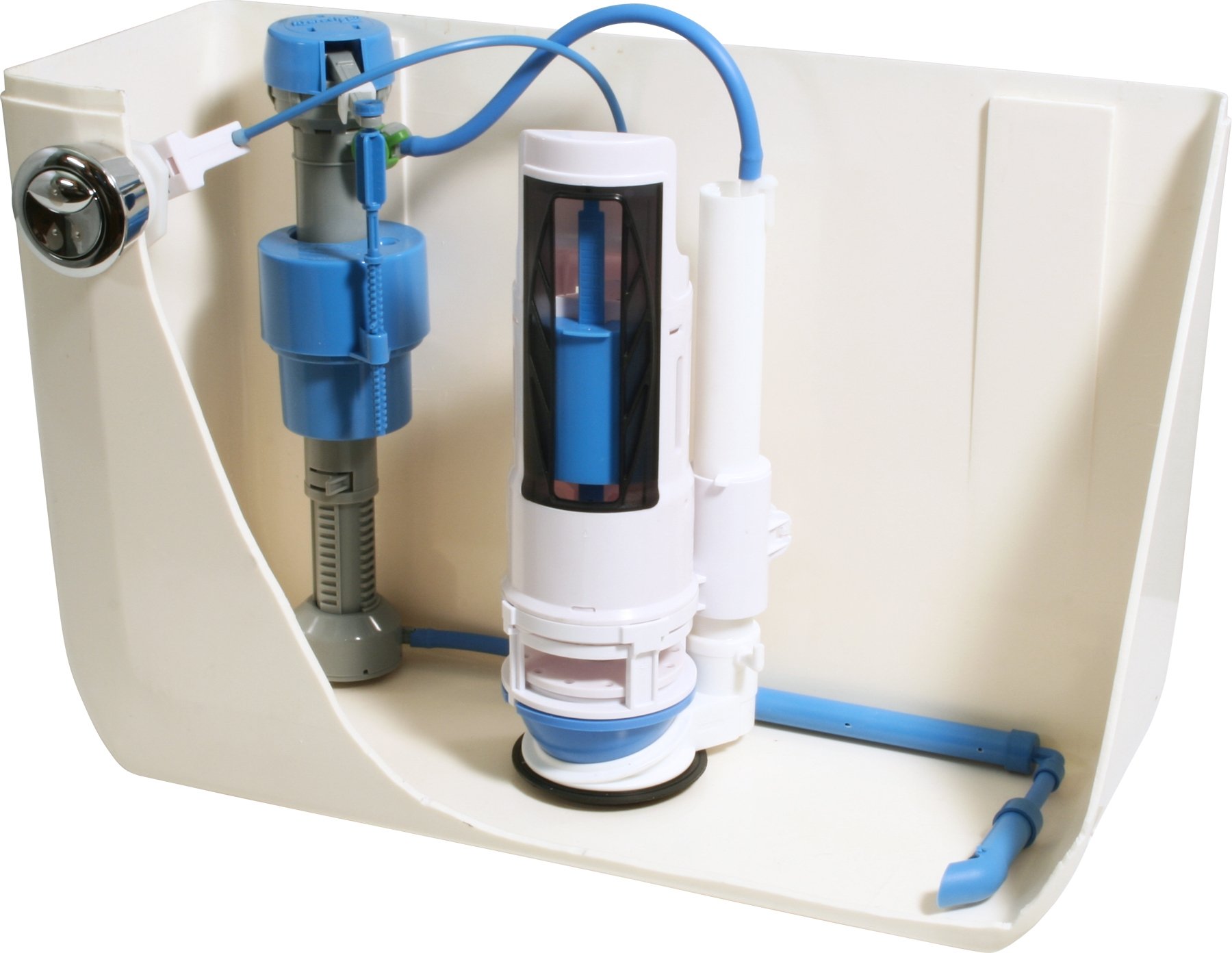How Does a Toilet Fill Valve Work? Pros, Cons, Types, & FAQ
-
Visnja Radosavljevic
- Last updated:

While almost everybody uses toilets every day, most of us are unfamiliar with the anatomy of a toilet. Although it may seem unnecessary to know all toilet components, it’s beneficial to learn more about those that allow our toilet to flush. That way, if there is an issue with flushing, you’ll know where to look and how to fix it.
One of the crucial toilet components is a fill valve located inside the tank. A toilet fill valve is a toilet component inside the tank, and its function is to refill the tank after you flush. This article will provide you with all details about toilet fill valves, including how they work and the different types of toilet valves.
What Is a Toilet Fill Valve and How Does It Work?
A water supply comes to the valve from underneath the tank. The fill valve consists of various parts that control the water amount inside your toilet’s tank.
Toilet fill valves typically use a pressure sensor or a floater to measure the level of water in the tank and respond if there are any changes. When you flush, the water goes from the tank to the bowl, activating the fill valve. It remains open until the water level reaches the necessary amount. This process ensures that your toilet has a supply of clean water.

- The toilet tank is full of water before you flush. The toilet fill valve is shut, while the toilet float floats at the top of the toilet tank.
- Once you flush, the toilet flapper lifts and the water from the tank flows to the bowl, passing through the flush valve.
- After you release the flush handle, the toilet flapper goes back into its original position while the lift chain untightens. When the toilet flapper goes back to its position, the flush valve prepares for a refill.
- As the tank is emptied, the toilet float causes the fill valve to open.
- Through the fill valve, the water slowly starts filling the tank.
- During fulling, the toilet float rises until it reaches its proper height when the toilet fill valve shuts off. Once the tank is full, the water stops flowing.
What Are the Different Types of Toilet Valves?

- Float cup fill valve: This type of toilet fill valve doesn’t have the conventional floating ball. Instead, it has a plastic, circular cup, which moves up and down the fill valve shaft with the changes in the water level inside the tank. It’s easy to adjust as it doesn’t have a lot of parts, which is why it’s one of the most reliable toilet fill valve types. When you flush the toilet, the floating cup moves down the shaft and opens the water flow inlet. As the water fills the tank, the cup moves upwards, reaching the desired height and closing the water flow inlet.
- Floatless fill valve: This toilet fill valve doesn’t contain a ball or a float cup. Instead, it uses a diaphragm located at the tank’s base with pressure-sensing properties. This fill valve operates underwater, and once the pressure reaches its maximum, it shuts down. These valves are reliable, and they’re common in low-pressure toilets. They’re also easily adjustable, which is beneficial if something breaks down. However, when it comes to durability and quality, they can’t compare with other toilet fill valve types.
- Piston/plunger type fill valve: This toilet fill valve is among the first fill valves produced. They consist of a metal body with a piston or a plunger system that opens and closes the water inlet to the tank. It injects the water from below the tank instead of above. Typically, these fill valves have a metal body and are attached to a brass rod connected to a floating ball that remains at the top of the tank.
- Diaphragm fill valve: These valves are similar to the piston/plunger toilet valves because they contain a brass rod and a float ball. However, the rod can sometimes be plastic. When you flush a toilet with this fill valve, the floater moves down, and it moves the rod with it. The rod presses the top of the diaphragm and opens the water inlet to the tank. While the water fills, it moves the floating ball up; it moves the rod and releases the pressure allowing the diaphragm to close the water inlet.
 Advantages and Disadvantages of Toilet Valves
Advantages and Disadvantages of Toilet Valves
Toilet fill valves are essential to your toilet functioning properly and filling your tank. When it comes to the advantages and disadvantages of toilet valves, we’ll list them below, dividing them per the fill valve type.
Float Cup Fill Valve
- Modern design
- Easy to use and adjust
- Doesn’t have a lot of parts
- Reliable
- Made of plastic
Floatless Fill Valve
- Pressure-sensing properties
- Reliable
- Easily adjustable
- Not the best durability and quality
Piston/Plunger Fill Valve
- Reliable
- Durable
- Complicated design
- Hard to adjust
Diaphragm Fill Valve
- Comes in a plastic and brass option
- Complicated design
- Hard to adjust

Frequently Asked Questions (FAQs)
How Do I Know If My Toilet Fill Valve Is Malfunctioning?
- The toilet is making a whistling or hissing sound: If the toilet fill valve is blocked or doesn’t fully open, the water must force its way through. If this happens, you will notice a strange whistling or hissing sound as the tank fills up with water.
- The toilet keeps running: If your toilet keeps running, it’s likely that the toilet fill valve seal is old or worn out. Because of that, it won’t shut even when the tank is full, resulting in constant running.
- Leaking at the coupling: If there’s water leaking at the coupling, your valve is likely blocked. Another common sign of blockage of the toilet fill valve is that it’s not filling or takes longer than usual.

How Can You Repair the Fill Valve on a Toilet?
- Turn off the water supply to your toilet and flush
- Hold the toilet fill valve shank, turning the cap to remove it
- Check for any presence of debris or dirt
- Hold the cap turned inside out on top of the toilet fill valve
- Turn the water on to allow its pressure to remove the dirt
- Once the valve unblocks, place the cap back in place
However, sometimes, it’s better to replace the entire valve instead of repairing it as it’s inexpensive and easy to replace.
Conclusion
Issues with toilet fill valves are common, and, in order to fix them, you should be familiar with the type of toilet fill valve inside your toilet. Luckily, most fill valve problems are easily resolvable, and you can always reach out to a plumber if you’re unsure how to fix your issue.
See Also:
- How Much Room Do You Need for a Toilet?
- Why is My Toilet Seat Turning Blue
- How Many Gallons Does It Take To Flush a Toilet?
- Why Does My Sink Gurgle When the Toilet Flushes?
Featured Image Credit: _R Dorosh, Shutterstock
Contents
 Advantages and Disadvantages of Toilet Valves
Advantages and Disadvantages of Toilet Valves
